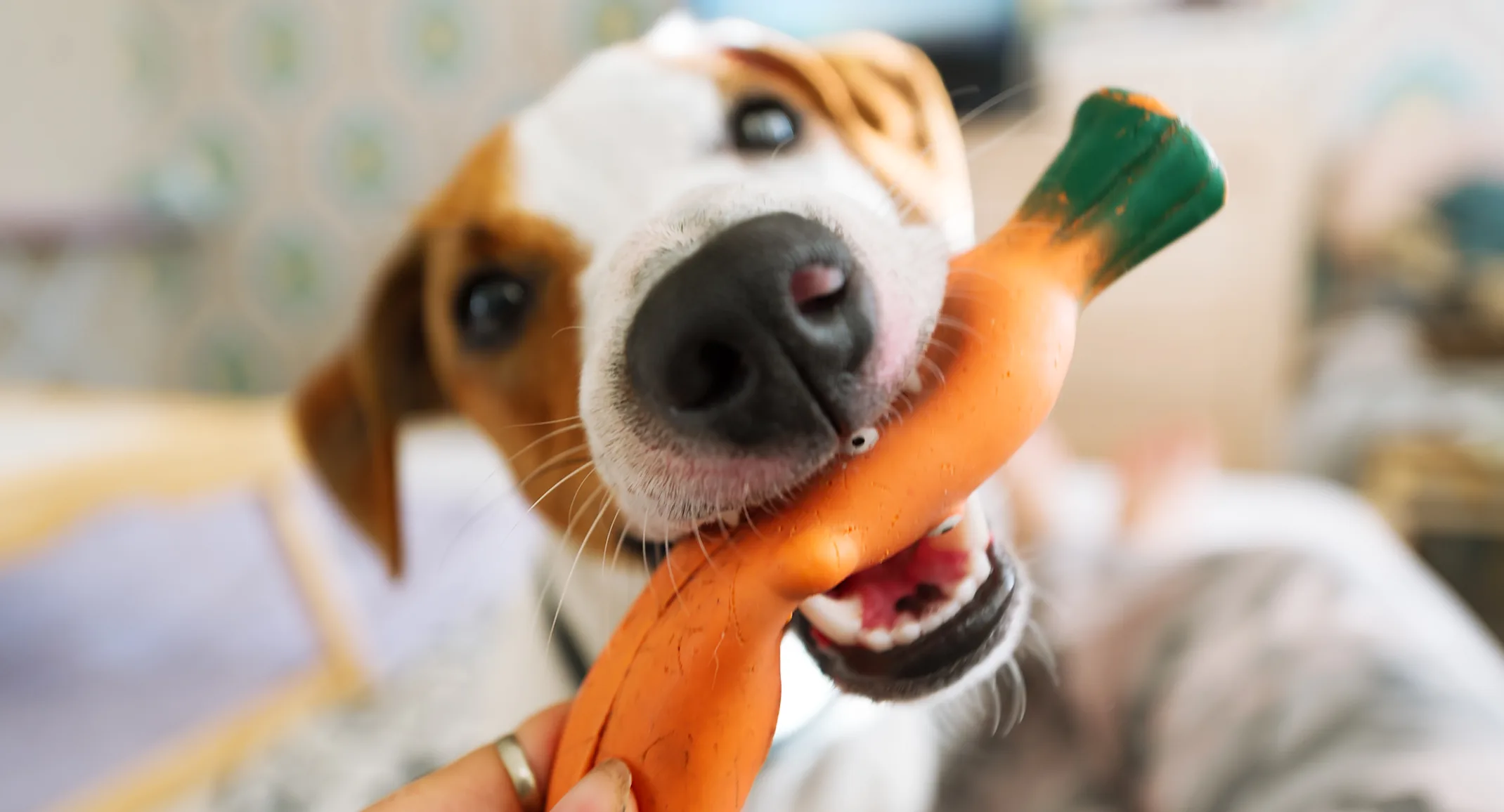When Your Pet Eats Something They Shouldn’t: A Guide to Foreign Object Ingestion
Pet Safety

A foreign body is a non-food object ingested that can either pass through the gastrointestinal tract or not. When a foreign body is unable to pass through the gastrointestinal system, an obstruction occurs. This can be in the stomach or the small intestine. Common foreign objects ingested are bedding, clothing items, toys, string, yarn, paper, sticks, corn cobs, and rocks. There can be numerous other items our pets can ingest that are not listed. Foreign object ingestion is potentially life-threatening due to the risk of gastrointestinal rupture, which can lead to sepsis and death. This is considered an emergency, and your pet should be brought in immediately to an emergency veterinarian.
Signs of Foreign Object Ingestion
Common signs your pet may have ingested a foreign object are as follows:
Vomiting, which may contain parts of the foreign object in the contents produced
Diarrhea or producing small amounts of fecal material
Lethargy or hiding (especially with cats)
Decreased appetite or complete refusal of food
Abdominal pain, which can be seen as discomfort or growling when petting or attempting to pick up your pet
Occasionally, part of the object may be stuck in the mouth
Many of these signs are similar to those of gastrointestinal disease. Therefore, it is important to bring them to an emergency veterinarian to rule out foreign object ingestion even if your pet is not known to get into things.
Diagnosing Foreign Object Ingestion
When you bring your pet to the ER, a thorough physical exam will be performed. The diagnostic tests usually performed first are radiographs of the abdomen. Radiographs can help determine if there are any obvious metal or dense objects in the stomach or small intestine. However, this is not 100% diagnostic as some materials like clothing or paper, for example, are unable to be seen on radiographs. Patterns in the intestine can make it more or less likely for a foreign object to be present and/or obstruct the GI tract. Another method of diagnosing is a barium study. Barium is a bright white liquid that is swallowed by your pet. This is a great way to provide contrast of the GI tract contents on radiographs. A series of radiographs is repeated every two hours to determine if there is movement in the GI tract. If there is a foreign object in the GI tract, Barium can illuminate it by coating it, or the barium can remain in the same place in the GI tract over at least 2 consecutive radiographs. Although this is a very helpful diagnostic tool, it still is not 100% diagnostic as some linear objects like cloth string toys or even string can’t be coated with the Barium. With the help of a thorough history, physical exam findings, and diagnostic imaging, a treatment plan can be determined if a foreign object is found and if it is suspected to be obstructive.
Treatment and Prognosis
There are a few approaches for the treatment of foreign object ingestion. If the object is in the stomach and not sharp or caustic, vomiting may be induced to try and produce the object. In some cases, the foreign object may be able to pass on its own. The veterinarian may recommend hospitalization on IV fluids and gastroprotection with monitoring. A recheck radiograph will be performed to determine if it is passing. Abdominal exploratory surgery with the removal of the foreign body is elected if there is a highly suspected or confirmed foreign body obstruction. This is a surgery where the entire abdominal gastrointestinal tract is thoroughly examined. Once the location of the foreign object is identified, it is carefully removed, either through traditional surgery or, when appropriate, by endoscopy. If there are necrotic or perforated intestines, a resection and anastomosis may be indicated. This is where the non-viable parts of the intestine are removed, and the remaining healthy intestines are reconnected with suture material. Hospitalization will follow to ensure the surgery was successful and that complications are not occurring. The duration of hospitalization can vary.
Recovery and prognosis are multifactorial, with each pet requiring tailored plans. Some factors contributing to prognosis are the type of foreign body and location within the GI tract, duration of obstruction, and the current health status of your pet at the time.
When taking your pet to the ER, the veterinarian will be sure to go over the tailored diagnostic and treatment plan with you to help make the best decision for your pet.
